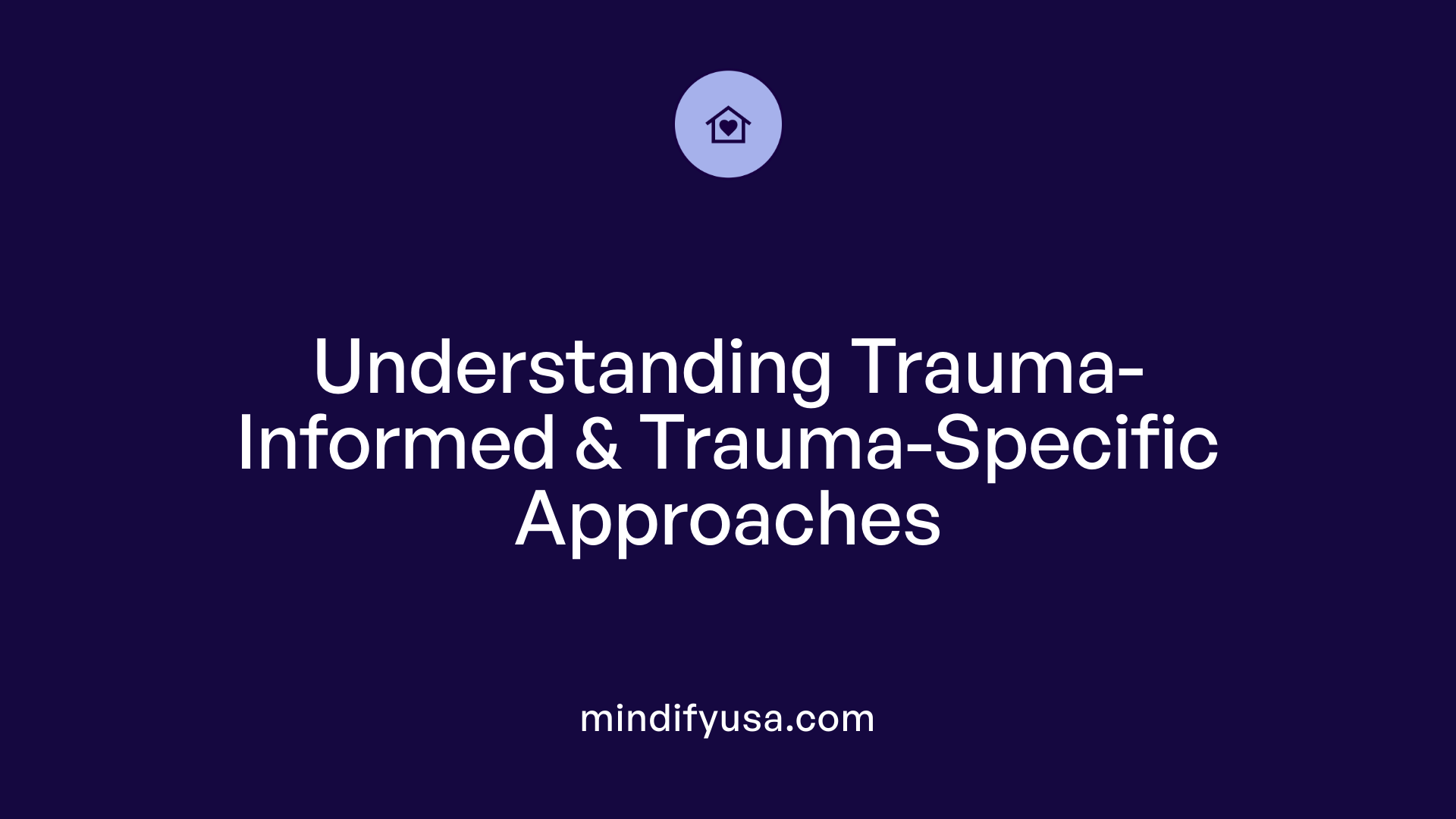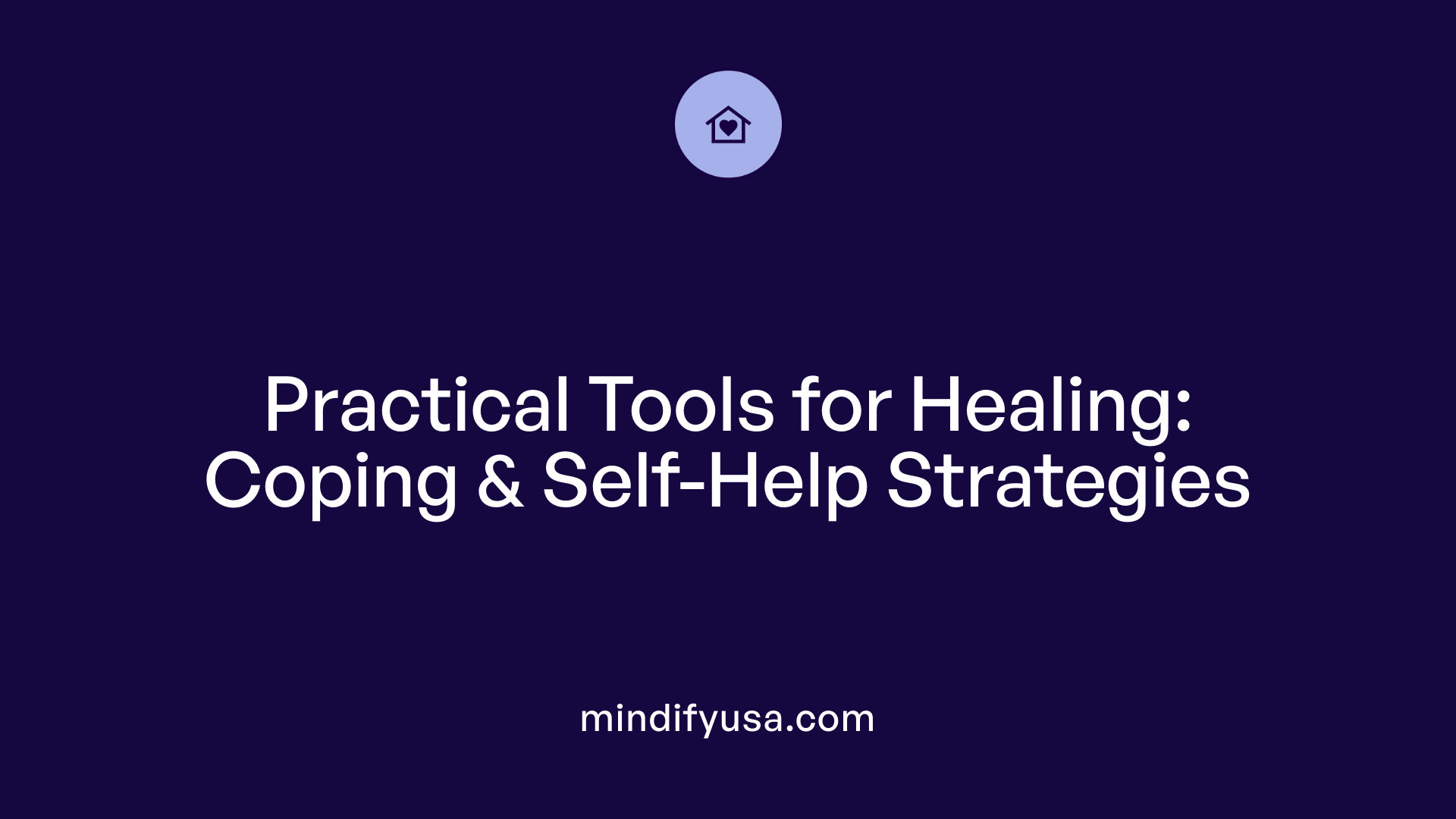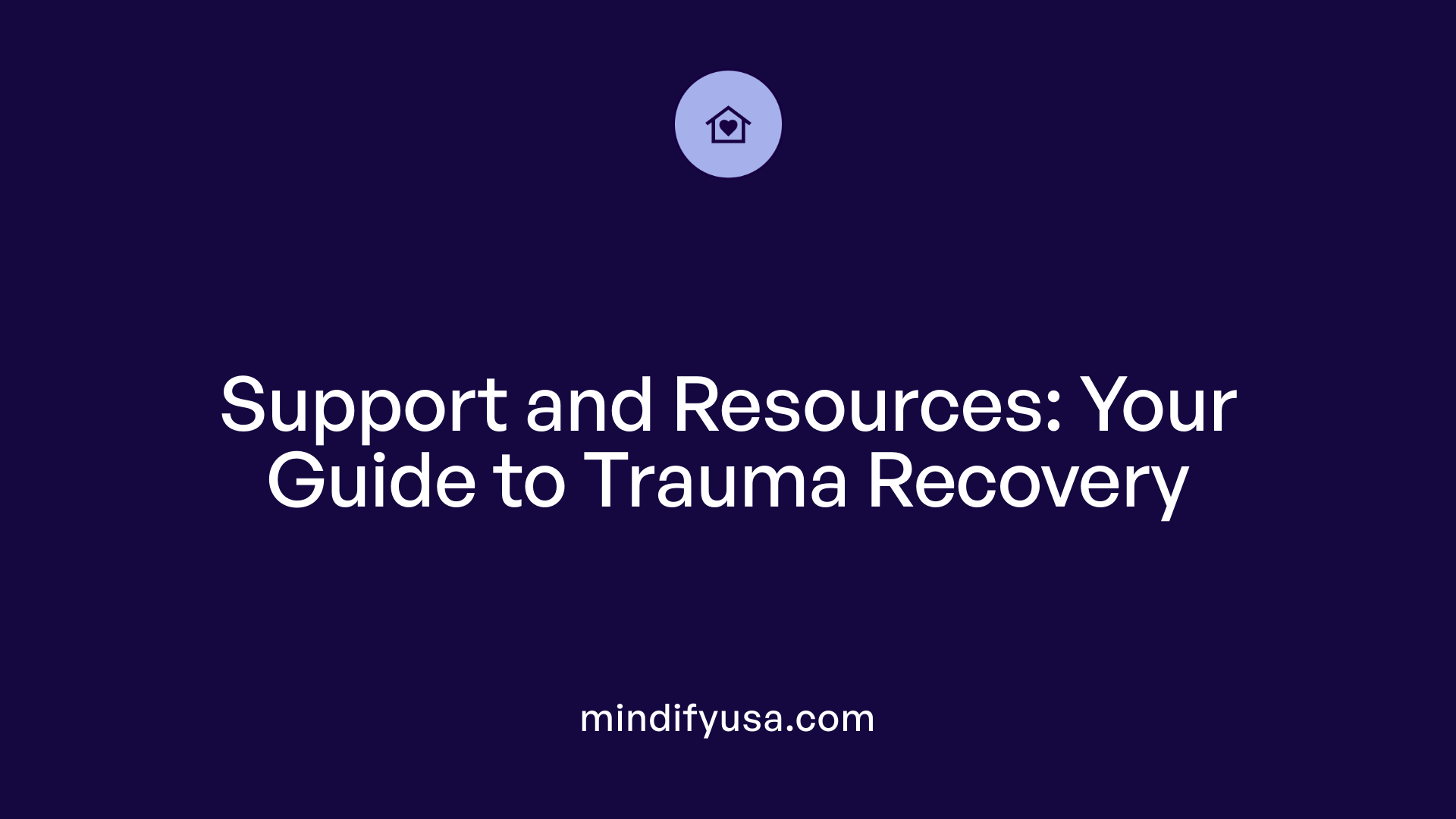Understanding Trauma and the Power of Therapeutic Intervention
Trauma is a profound and often overwhelming emotional response to distressing events such as violence, natural disasters, accidents, or ongoing stressors. Its effects permeate emotional, psychological, and physical well-being, challenging an individual's sense of safety, self-worth, and trust. Fortunately, trauma-informed therapy provides a framework that recognizes these impacts and fosters a safe environment for healing. This article explores how targeted therapeutic approaches can facilitate recovery, rebuild confidence, and restore emotional stability after life trauma.
Defining Trauma and Its Effects on Well-Being
What is trauma and how does it affect emotional and psychological well-being?
Trauma is a profound psychological and physical response triggered by deeply distressing or threatening events such as violence, natural disasters, accidents, or ongoing stressors like a pandemic. When someone experiences trauma, their ability to cope can be overwhelmed, leading to intense emotional reactions, flashbacks, and feelings of fear or helplessness.
The effects of trauma extend beyond immediate emotional responses. It can cause long-lasting impacts on mental health, including anxiety, depression, emotional dysregulation, and symptoms of post-traumatic stress disorder (PTSD). These reactions can challenge an individual’s core beliefs about safety, self-worth, and trust in others.
Biological changes accompany trauma, affecting brain functioning and stress regulation systems. This can result in physical symptoms such as headaches, difficulty sleeping, and a racing heart. The overall impact can disrupt daily life, damage relationships, and impair functioning.
People’s responses to trauma are shaped by personal history, age, cultural background, and social environment. While some may recover quickly, others may experience subtle or insidious effects that hinder their quality of life.
Supportive intervention approaches like trauma-informed care, therapy, and resilience-building strategies are essential. These methods help process traumatic memories, restore a sense of safety, and foster healing.
In summary, trauma influences emotional, mental, and physical health in complex ways. Recognizing these impacts is the first step toward effective treatment and recovery, promoting well-being over the long term.
Principles of Trauma-Informed and Trauma-Specific Therapy

What are trauma-informed and trauma-specific therapeutic approaches?
Trauma-informed approaches are broad frameworks that aim to create safe and supportive environments for individuals who have experienced trauma. These approaches are rooted in understanding the widespread impact of trauma on mental, emotional, and physical health. They emphasize principles such as safety, trustworthiness, collaboration, empowerment, and cultural sensitivity. The goal is to prevent re-traumatization and foster resilience by grounding practices in respect and validation of each person's unique experience.
Trauma-specific therapies, however, are targeted, evidence-based interventions designed to directly address trauma symptoms. Examples include trauma-focused cognitive-behavioral therapy (TF-CBT) and Eye Movement Desensitization and Reprocessing (EMDR). These therapies involve specific techniques like exposure to traumatic memories, cognitive restructuring to challenge negative beliefs, and bilateral stimulation to assist processing. While trauma-informed care provides an overarching philosophy applicable across various settings such as hospitals, schools, or clinics, trauma-specific treatments involve structured protocols focused solely on healing from trauma.
Both approaches are essential components in trauma recovery. The trauma-informed model creates a safe framework in which trauma-specific interventions can be effectively delivered. This combination helps individuals process their experiences, rebuild trust, and regain emotional stability, ultimately supporting their journey toward resilience and recovery.
Treatment Modalities for Trauma Recovery
 What treatment modalities are available for trauma recovery?
What treatment modalities are available for trauma recovery?
Trauma recovery is supported by a range of evidence-based approaches, primarily centered around trauma-focused psychotherapy. These therapies include Cognitive Behavioral Therapy (CBT), Eye Movement Desensitization and Reprocessing (EMDR), and Trauma-Focused Cognitive Behavioral Therapy (TF-CBT). They are designed to help individuals process traumatic memories, challenge negative beliefs, and gradually confront avoidance behaviors.
Typically, these therapies involve a series of 8 to 16 weekly sessions, though duration can vary based on individual needs. EMDR, for example, guides clients through eye movements or other rhythmic stimulations while recalling trauma, facilitating the reprocessing of distressing memories. TF-CBT specializes in addressing issues like mistrust, guilt, and negative self-perception, especially in children and adolescents.
Alongside psychotherapy, pharmacotherapy plays a significant role. Selective serotonin reuptake inhibitors (SSRIs), such as sertraline and paroxetine, are commonly prescribed to help alleviate symptoms of anxiety and depression associated with trauma and PTSD. Medications like benzodiazepines are generally discouraged because of potential dependency issues and limited long-term benefits.
Complementary strategies include stress management techniques like mindfulness, grounding exercises, and supportive therapies. These promote emotional regulation and resilience.
Combining psychotherapy with appropriate medication, guided by mental health professionals, offers the most comprehensive path to healing. Tailoring treatment plans individually ensures that both psychological and biological aspects of trauma are addressed effectively.
| Treatment Modality | Description | Typical Session Duration | Additional Notes |
|---|---|---|---|
| Cognitive Behavioral Therapy (CBT) | Addresses negative thought patterns and behaviors | 8-16 weekly sessions | Focuses on re-framing trauma-related beliefs |
| EMDR | Uses rhythmic stimulations for trauma reprocessing | 8-12 sessions | Particularly effective for PTSD |
| TF-CBT | Targets emotional issues in children and adults | 10-15 sessions | Incorporates psychoeducation and emotional regulation |
| Pharmacotherapy (SSRIs) | Medications to manage symptoms | Varies, daily use | Often prescribed as part of a combined approach |
Understanding the available options helps individuals and practitioners design effective recovery plans. When used thoughtfully and under professional guidance, these modalities can significantly reduce trauma symptoms and foster resilience.
Rebuilding Life Post-Trauma: Pathways Forward

How can individuals begin healing and rebuilding their lives after trauma?
Starting the journey of healing after experiencing trauma involves establishing safety and stability first. This means creating an environment where one feels physically and emotionally secure. Developing coping strategies such as grounding techniques, relaxation exercises, and mindfulness can help manage overwhelming emotions like anxiety, flashbacks, or intrusive thoughts.
Engaging in evidence-based therapies such as Cognitive Behavioral Therapy (CBT) or Eye Movement Desensitization and Reprocessing (EMDR) can facilitate safely processing traumatic memories. These therapies focus on reframing negative beliefs and reducing trauma symptoms.
The recovery process typically unfolds in three main stages:
- Safety and Stabilization: Building emotional resilience and establishing routines that promote well-being.
- Mourning and Remembrance: Processing grief, emotions, and meanings attached to the trauma, often with professional support.
- Reconnection and Integration: Rebuilding trust, creating a new sense of self, and reconnecting with others.
Throughout these phases, supportive relationships, setting healthy boundaries, and engaging in self-care are vital. Patients are encouraged to practice patience and self-compassion, recognizing that healing is non-linear and unique for each individual. With consistent effort, professional guidance, and emotional support, trauma survivors can rebuild their lives, find purpose, and experience a renewed sense of control and hope.
Strategies for Safety, Emotional Processing, and Stabilization
What strategies can help in safety, stabilization, and emotional processing during trauma recovery?
Trauma recovery is a gradual process that prioritizes establishing safety before moving toward emotional processing and integration. Effective strategies include creating routines that foster predictability and control, which helps rebuild a sense of stability. Practicing mindfulness and grounding techniques—such as deep breathing, progressive muscle relaxation, or sensory awareness exercises—can reduce distress and bring individuals into the present moment.
Emotion regulation skills are essential; these involve learning to identify, accept, and manage overwhelming feelings. Techniques like visualization, positive affirmations, and self-soothing activities support emotional stability. Additional approaches such as trauma-focused yoga, neurofeedback, animal-assisted therapy, and massage therapy can help regulate the nervous system physically and psychologically.
Understanding trauma responses as protective mechanisms is vital. For example, hypervigilance or emotional numbness serve as survival strategies in unsafe environments but can become maladaptive. Recognizing these reactions as protective allows clients to develop self-compassion and gradually regain a sense of internal safety.
Trauma-informed treatment models, like TIST (Trauma-Informed Stabilization Treatment), emphasize creating a safe internal space, working with various parts of the self, and understanding that traumatic responses serve a purpose. These approaches facilitate self-awareness and empower individuals to manage and integrate their experiences.
By combining these techniques and tailoring them to individual needs, clients can foster a sense of safety, stabilize emotions, and prepare for deeper processing of traumatic memories in a supportive environment. This foundation is crucial for effective healing, resilience, and long-term recovery.
Coping and Self-Help Strategies for Trauma Survivors

What coping mechanisms and self-help strategies are effective for trauma survivors?
Survivors of trauma can benefit from a variety of coping and self-help techniques that promote healing and resilience. One of the foundational practices is mindfulness and breathing exercises. These techniques help manage emotional triggers by grounding individuals in the present moment, reducing feelings of overwhelm, and fostering emotional regulation.
Engaging in journaling or creative outlets such as art therapy allows trauma survivors to process their experiences. Writing about feelings or expressing oneself through art can facilitate emotional release and help make sense of traumatic memories.
Building a consistent self-care routine plays a vital role in recovery. This includes maintaining healthy sleep habits, eating nutritious foods, and engaging in regular physical activity or enjoyable exercises. These practices not only support physical health but also create a sense of safety and control, which is crucial after trauma.
Seeking support from trauma-informed mental health professionals, joining support groups, or reaching out via helplines provides validation and guidance during healing. Such environments foster understanding, reduce feelings of isolation, and offer coping strategies tailored to individual needs.
Therapies like Eye Movement Desensitization and Reprocessing (EMDR) and cognitive reframing help challenge negative self-beliefs. These approaches work to rewrite harmful narratives and promote resilience.
In addition to these methods, incorporating positive affirmations, practicing self-compassion, pacing oneself through the healing process, and setting healthy boundaries are essential steps toward rebuilding self-worth.
Creating a personalized toolkit of strategies—such as grounding techniques, emotional regulation exercises, and long-term activities—equips trauma survivors with the resources needed to regain stability and a sense of safety. Over time, these tools help restore self-esteem, foster supportive environments, and support ongoing recovery.
Recognizing Symptoms and Indicators of Trauma
What are common symptoms and responses associated with trauma and PTSD?
Trauma and PTSD manifest through a variety of emotional, behavioral, and physical symptoms. Common emotional signs include intrusive memories such as flashbacks and nightmares, feelings of emotional numbness, and avoidance of people, places, or activities that remind individuals of the traumatic event. Many experience ongoing hyperarousal, which can show up as irritability, heightened vigilance, difficulty sleeping, and an exaggerated startle response.
Negative changes in thoughts and mood are also typical, with individuals feeling fearful, guilty, or disconnected. Behaviorally, trauma survivors may withdraw socially, avoid certain situations, or engage in self-destructive behaviors. Physically, responses can include sweating, rapid heartbeat, stomachaches, or headaches, often linked to the body's stress response.
Symptoms tend to begin within three months after trauma but can sometimes develop months or even years later, especially if the trauma remains unaddressed or triggers are encountered.
Effective treatment involves trauma-focused psychotherapy, such as Cognitive Processing Therapy (CPT), Eye Movement Desensitization and Reprocessing (EMDR), and exposure therapy. Medications like selective serotonin reuptake inhibitors (SSRIs) can also help manage symptoms, reducing emotional distress and improving daily functioning.
The duration and severity of these symptoms vary, influenced by personal resilience, support systems, and access to treatment. Recognizing these signs early is vital for seeking appropriate help and beginning the healing process.
Resources and Support Options for Trauma Recovery
 Trauma recovery can be supported through a diverse range of resources that cater to different needs and stages of healing. Mental health services and helplines are essential for immediate assistance and ongoing support. For instance, SAMHSA’s Disaster Distress Helpline offers crisis intervention for individuals experiencing emotional distress due to traumatic events.
Trauma recovery can be supported through a diverse range of resources that cater to different needs and stages of healing. Mental health services and helplines are essential for immediate assistance and ongoing support. For instance, SAMHSA’s Disaster Distress Helpline offers crisis intervention for individuals experiencing emotional distress due to traumatic events.
Community and peer support groups provide a safe environment where survivors can share experiences, find validation, and gain strength from others who understand their journey. These groups often operate locally or online, bridging gaps in formal mental health services.
Educational resources and coping guides are invaluable tools for understanding trauma and developing self-help strategies. Books, therapeutic workbooks, videos, and clinical guidelines help both survivors and caregivers learn about trauma responses, emotional regulation techniques, and resilience-building activities.
Online therapy platforms have expanded access to trauma-focused treatment. Platforms like BetterHelp and Talkspace connect individuals with licensed therapists specializing in trauma and PTSD. These services offer convenience, anonymity, and flexibility to fit different lifestyles.
Specialized trauma centers and programs dedicate resources and expertise to treat complex trauma cases. Ideal for those with persistent symptoms or trauma stemming from severe experiences, these centers provide comprehensive care, including evidence-based therapies like EMDR, TF-CBT, and Somatic Experiencing.
Organizations such as the National Mass Violence and Victimization Resource Center and the National Alliance of Trauma Recovery Centers offer survivor-centered care, training, and educational initiatives tailored to various populations, including children, adults, and specific communities.
Furthermore, mobile apps focused on mindfulness, emotional regulation, and guided imagery complement therapy by helping individuals practice coping skills daily. These resources aim to empower survivors with tools for managing stress, reducing anxiety, and fostering resilience.
In combination, professional services, community support, accessible education, and technological aids form a comprehensive network that nurtures healing, fosters hope, and helps individuals rebuild their lives after trauma.
The Role of Therapy in Rebuilding Trust and Self-Esteem
How does trauma impact trust and emotional resilience?
Trauma can deeply affect a person's ability to trust themselves and others. It often distorts perceptions of safety, making individuals hypervigilant and overly cautious in their relationships. Rooted in automatic responses to danger, trauma can cause feelings of vulnerability, shame, and inadequacy.
Traumatized individuals may develop protective behaviors such as emotional numbness, withdrawal, or avoidance of conflict. These reactions, while protective, can impair relationships and hinder emotional resilience. Feelings of betrayal or fear of further harm can lead to difficulty being vulnerable, which hampers trust-building.
Trauma disrupts the sense of safety necessary for healthy relationships. It often leads to a cycle of fear and avoidance, impeding recovery of trust and resilience. However, with the right therapeutic support, individuals can gradually rebuild trust, develop emotional regulation skills, and restore a sense of safety and confidence in their connections.
What role does therapy play in rebuilding confidence and emotional stability after trauma?
Therapy serves as a vital tool in healing and re-establishing emotional stability after trauma. It offers a safe and empathetic environment where individuals can process painful memories and begin recovery.
Trauma-informed approaches like EMDR (Eye Movement Desensitization and Reprocessing), trauma-focused CBT, and prolonged exposure therapy utilize techniques such as guided eye movements, cognitive restructuring, and controlled exposure to traumatic memories. These methods are designed to reduce distress, challenge negative beliefs, and facilitate emotional healing.
Therapeutic work also focuses on teaching coping strategies, emotional regulation skills, and grounding exercises. These tools help clients manage overwhelming emotions, rebuild a sense of control, and foster resilience.
Furthermore, therapy often includes psychoeducation about trauma and mindfulness practices, supporting clients in stabilizing their emotions. Through ongoing support, individuals learn to reframe their trauma stories, rebuild their self-esteem, and regain trust in themselves and others.
In summary, therapy plays an essential role in guiding trauma survivors toward emotional balance, greater confidence, and healthier relationships, enabling them to live more stable and fulfilling lives after their experiences.
Embracing a Path of Hope and Healing
Recovery from trauma is a deeply personal journey that benefits immensely from the structured, compassionate support of trauma-informed therapy. By engaging in targeted psychotherapies like EMDR, TF-CBT, and exposure techniques, survivors can process complex emotions, challenge harmful beliefs, and gradually rebuild their sense of safety, trust, and self-worth. The collaborative therapeutic relationship fosters resilience, empowers individuals to regain confidence, and helps them craft a meaningful future beyond their pain. While healing may be nonlinear and require patience and ongoing effort, embracing therapy as a cornerstone of recovery opens the door to personal growth, transformation, and renewed hope.
References
- Trauma-Informed Therapy - StatPearls - NCBI Bookshelf
- Trauma Therapy Helps: Confidence and Emotional Stability
- Rebuilding After Trauma: Individual Therapy for Adults
- Building Emotional Resilience With Trauma Therapy After Sudden ...
- How to rebuild your life after trauma? Heal and thrive
- Post-traumatic stress disorder (PTSD) - Diagnosis and treatment
- Phases of Trauma Recovery
- Resilience & Renewal: How Trauma Therapy Restores Lives
- Coping With Traumatic Events - National Institute of Mental Health
- The Role of Trauma Counseling in Healing from PTSD






































































































